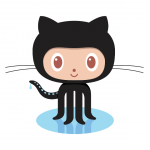Sponsor: Using RabbitMQ or Azure Service Bus in your .NET systems? Well, you could just use their SDKs and roll your own serialization, routing, outbox, retries, and telemetry. I mean, seriously, how hard could it be?
 This post is in my Fat Controller CQRS Diet series demonstrating how to thin your controllers by implementing commands and queries using the MediatR library.
For demonstration, I’m converting the MusicStore application that’s using ASP.NET Core MVC. All the source code is available on GitHub.
If you’re new to this series, here are earlier posts in this series:
This post is in my Fat Controller CQRS Diet series demonstrating how to thin your controllers by implementing commands and queries using the MediatR library.
For demonstration, I’m converting the MusicStore application that’s using ASP.NET Core MVC. All the source code is available on GitHub.
If you’re new to this series, here are earlier posts in this series:
Pipelines
In both the new Query and Commands handlers wrote in prior posts, there was one thing standing out that really didn’t belong. Logging For reference, here was ourAddToCartHandler that did some logging at the end of the method.
This really isn’t a concern of our AddToCartHandler. One way we can separate logging out is by having our Command go through another handler after it’s been executed. If we think about this a bit more broad, we can take it a step further and create a pipeline for our Command that can go through various handlers prior and after the main AddToCartHandler.
Video
If you prefer, I have a video tutorial that follows this blog post.Decorators
One way to accomplish this is to use Decorators. A decorator is nothing more than wrapper around our main handler. In our example, we are going to use StructureMap. In your project.json, add the following dependencies. Next in our Startup.cs we are going to configure StructureMap in theIServiceProvider ConfigureServices(IServiceCollection) method.
The gist is we are going to Decorate/Wrap any ICancellableAsyncRequestHandler<TRequest,TResponse> in a Pipeline<TRequest,TResponse> (which we will create next).
Here is our implementation of the Pipeline<TRequest,TResponse>
It will take the primary request as the first argument in the ctor, and then a array of IPostRequestHandler<TRequest,TResponse>, which we will create next to define our logging handlers.
Log Handler
We now have everything in place to separate the logging from ourAddToCartHandler.
All we need to know is create a class that will implement IPostRequestHandler<AddToCart,Unit> and it will be invoked after the AddToCartHandler.
Now we can jump back over to our AddToCartHandler and remove the ILogger and the logging code.
Validation, Authorization, Whatever
Hopefully now you can see that we could extend this to have pre-handlers that may do data validation, authorization or whatever other responsibilities that probably shouldn’t be in your main handler.Comments
All the source code for this series is available on Github. If have another way of creating a pipeline or separating concerns from your handlers, please leave comment or let me know on twitter.
If have another way of creating a pipeline or separating concerns from your handlers, please leave comment or let me know on twitter.